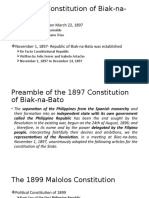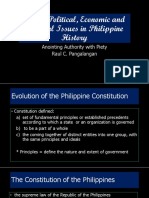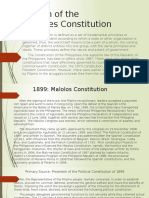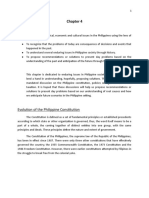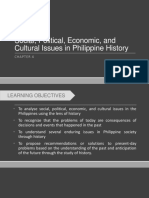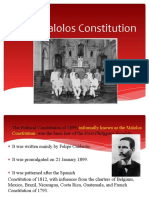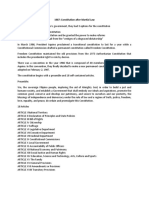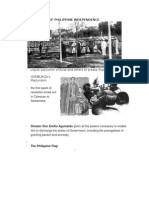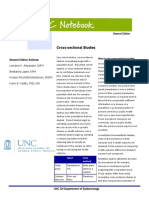100% found this document useful (1 vote)
1K views8 pages1897 and 1899 PHILIPPINE CONSTITUTIONS
The document summarizes the 1897 Biak-na-Bato Constitution and the 1899 Malolos Constitution established in the Philippines. The Biak-na-Bato Constitution formed a pact between Spain and Philippines to establish a ceasefire and Spanish self-rule in 3 years. It failed due to lack of trust. The 1899 Malolos Constitution established the first Philippine Republic and created a democratic government with separate executive, legislative and judicial branches based on sovereignty of the people.
Uploaded by
Mau AmorosoCopyright
© © All Rights Reserved
We take content rights seriously. If you suspect this is your content, claim it here.
Available Formats
Download as PPTX, PDF, TXT or read online on Scribd
100% found this document useful (1 vote)
1K views8 pages1897 and 1899 PHILIPPINE CONSTITUTIONS
The document summarizes the 1897 Biak-na-Bato Constitution and the 1899 Malolos Constitution established in the Philippines. The Biak-na-Bato Constitution formed a pact between Spain and Philippines to establish a ceasefire and Spanish self-rule in 3 years. It failed due to lack of trust. The 1899 Malolos Constitution established the first Philippine Republic and created a democratic government with separate executive, legislative and judicial branches based on sovereignty of the people.
Uploaded by
Mau AmorosoCopyright
© © All Rights Reserved
We take content rights seriously. If you suspect this is your content, claim it here.
Available Formats
Download as PPTX, PDF, TXT or read online on Scribd
/ 8


